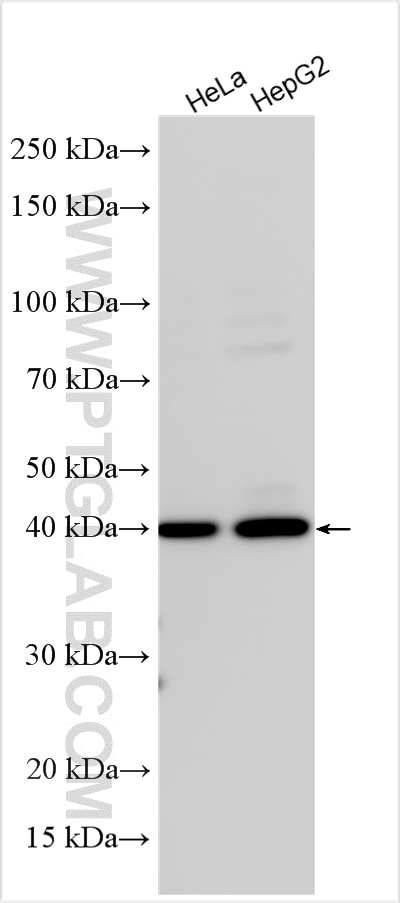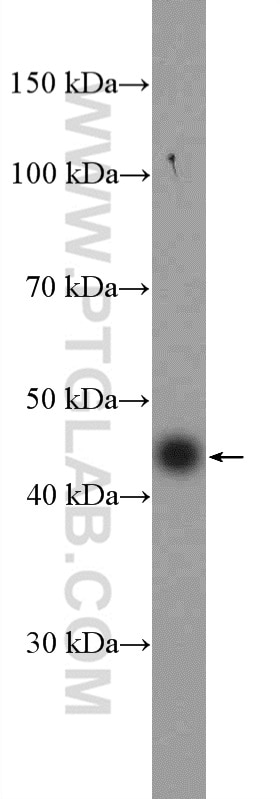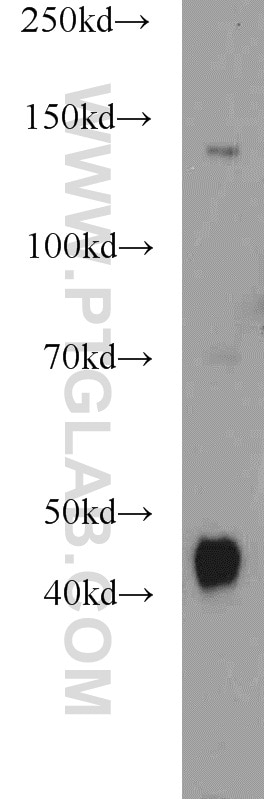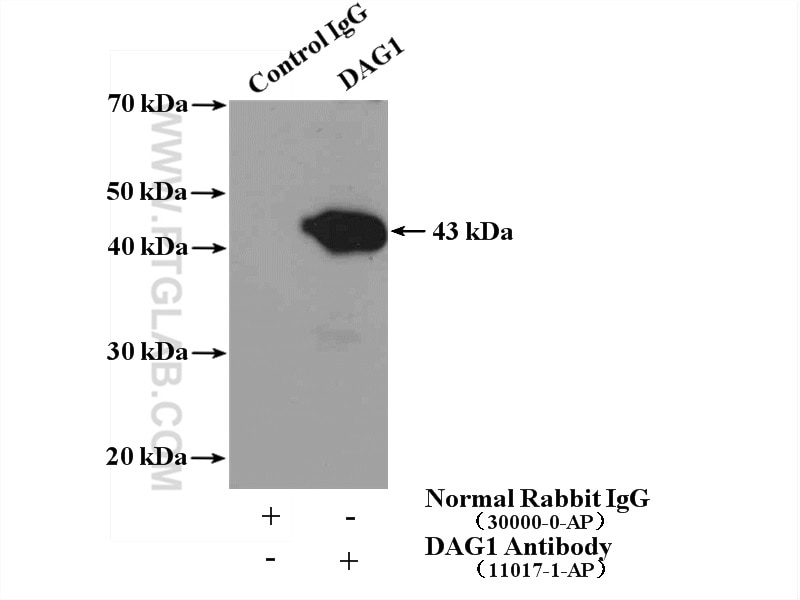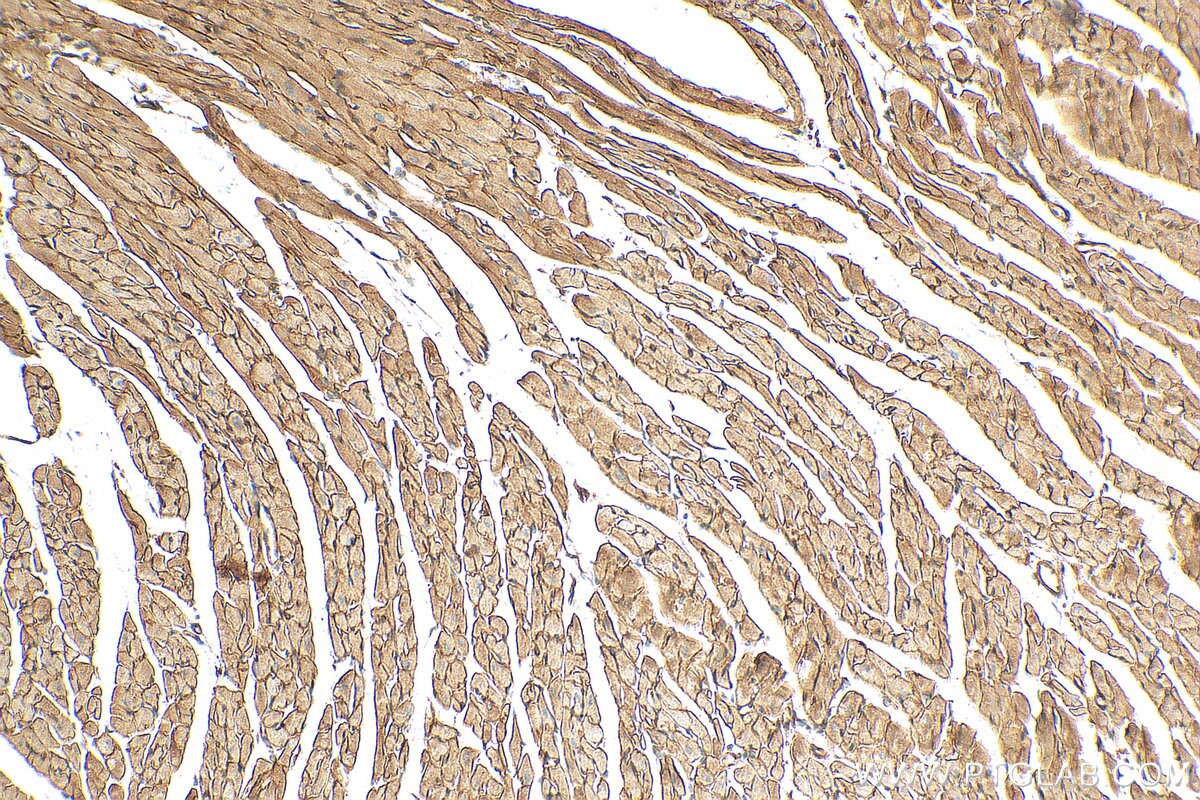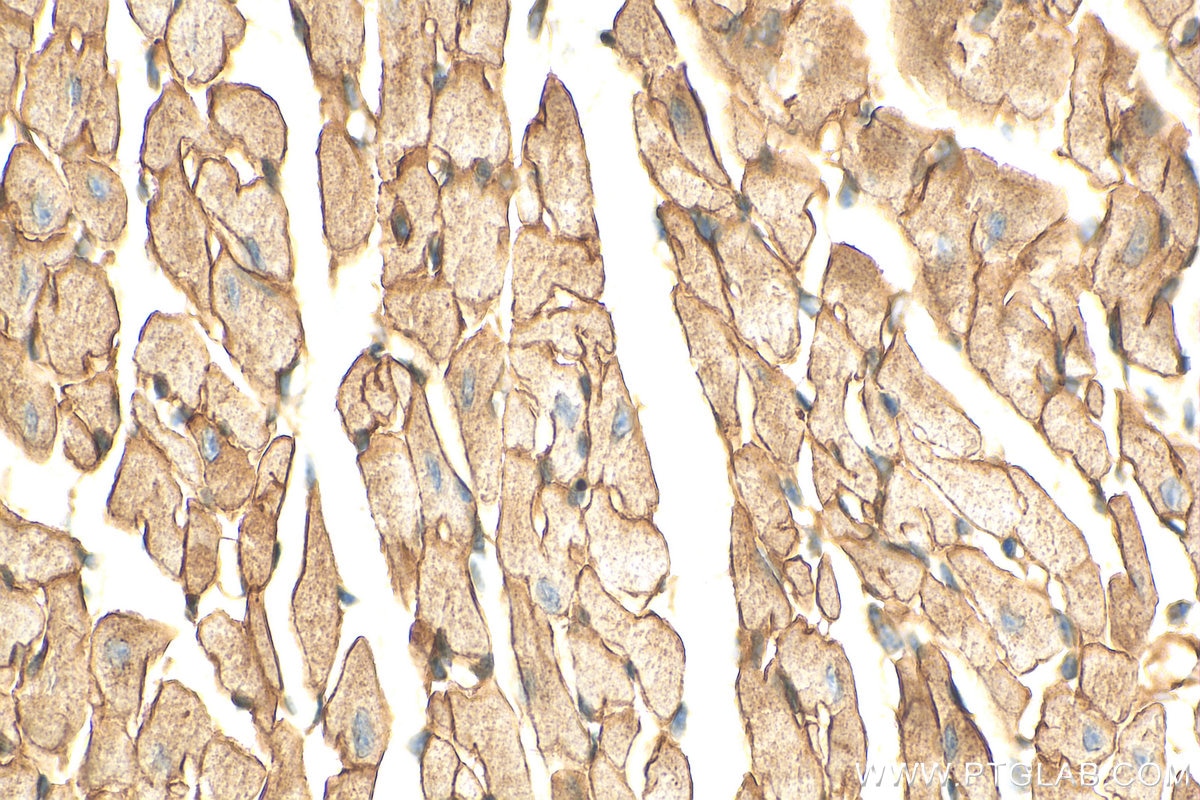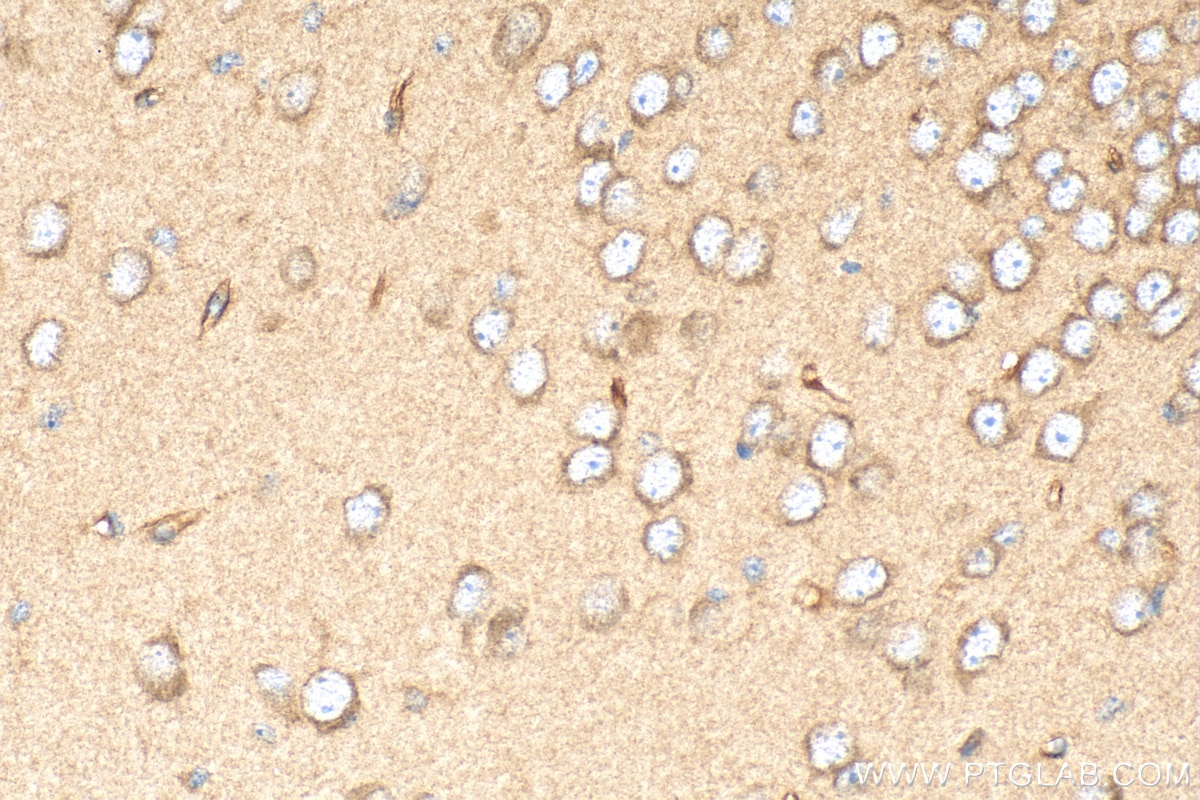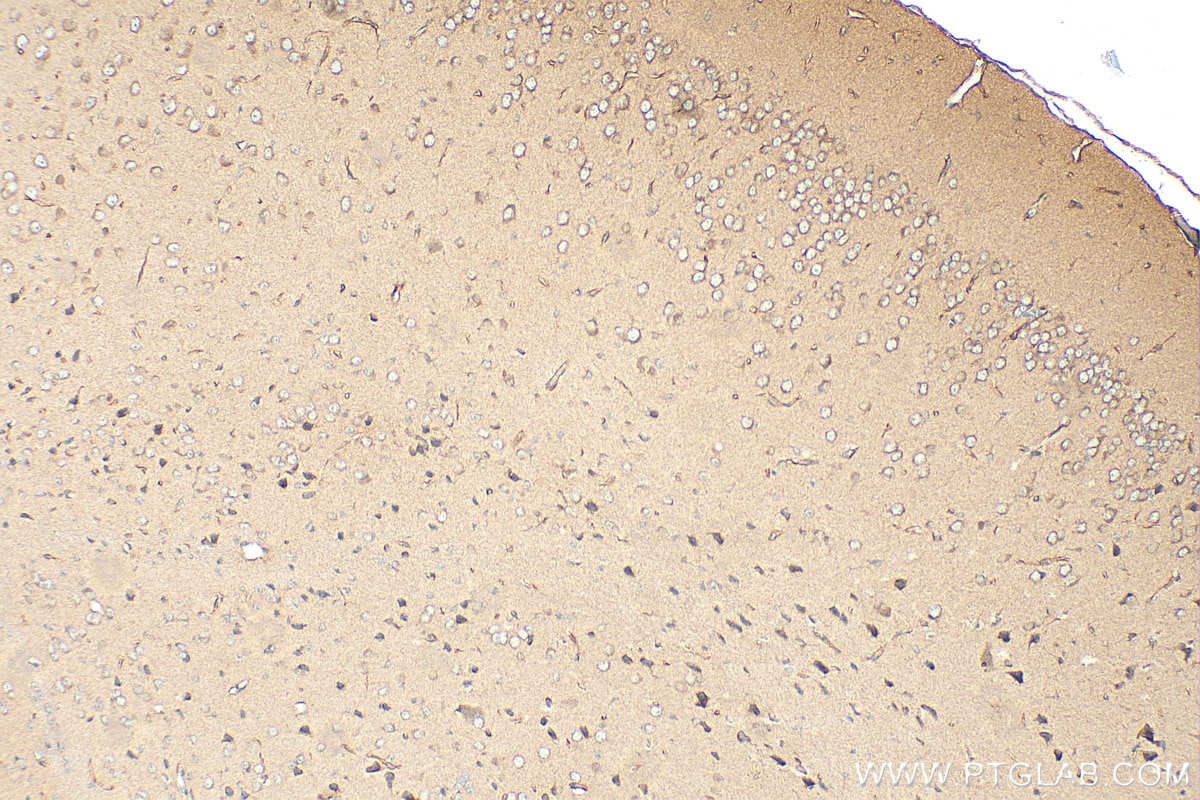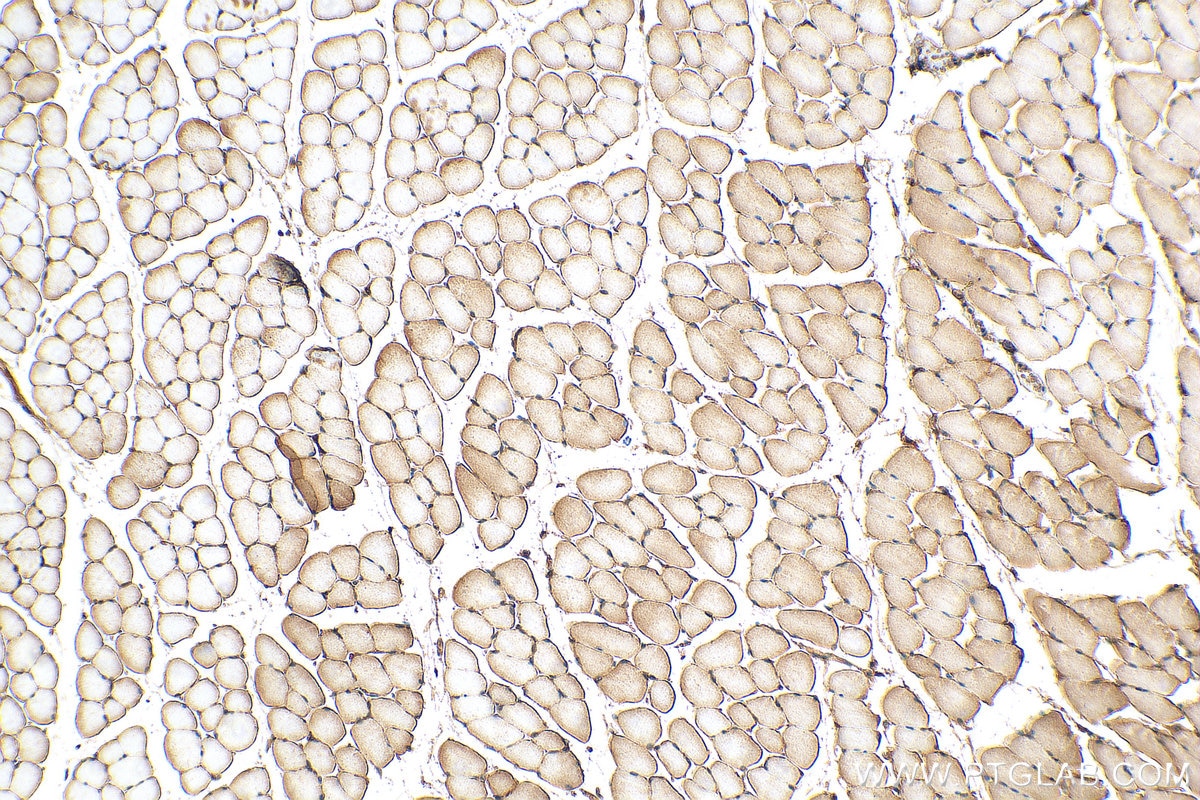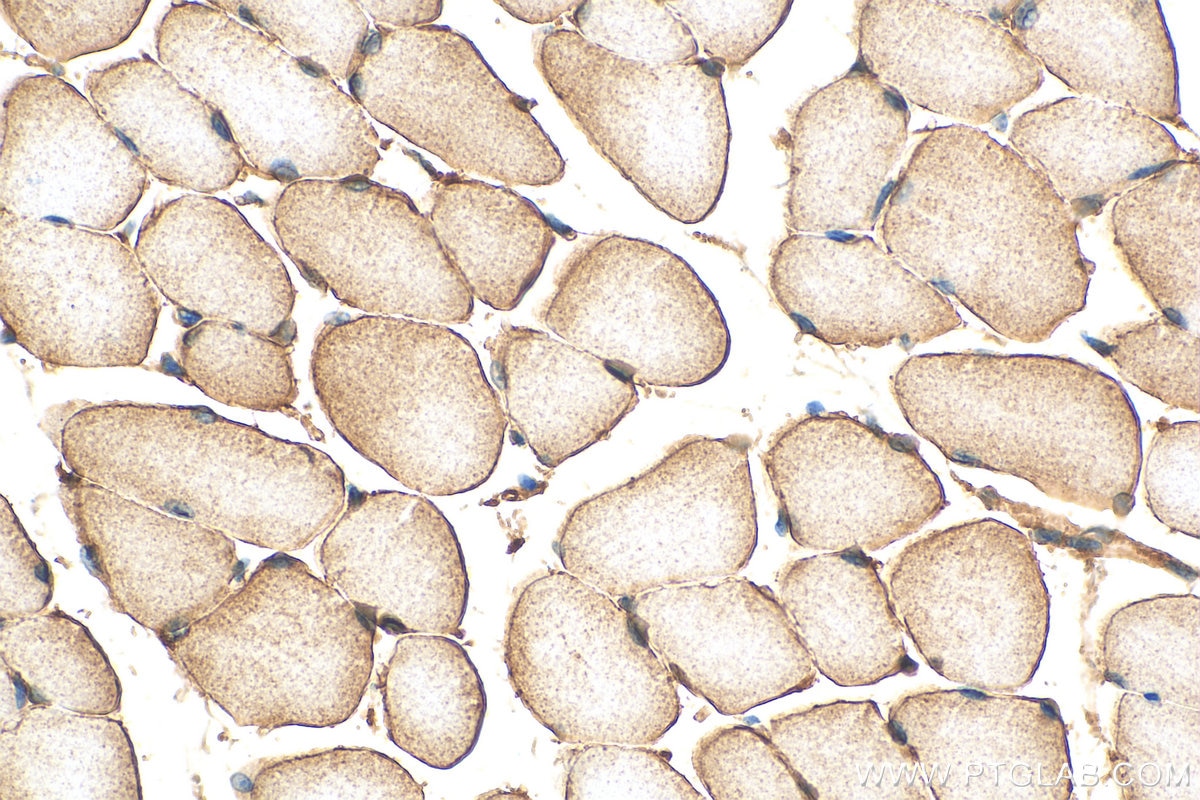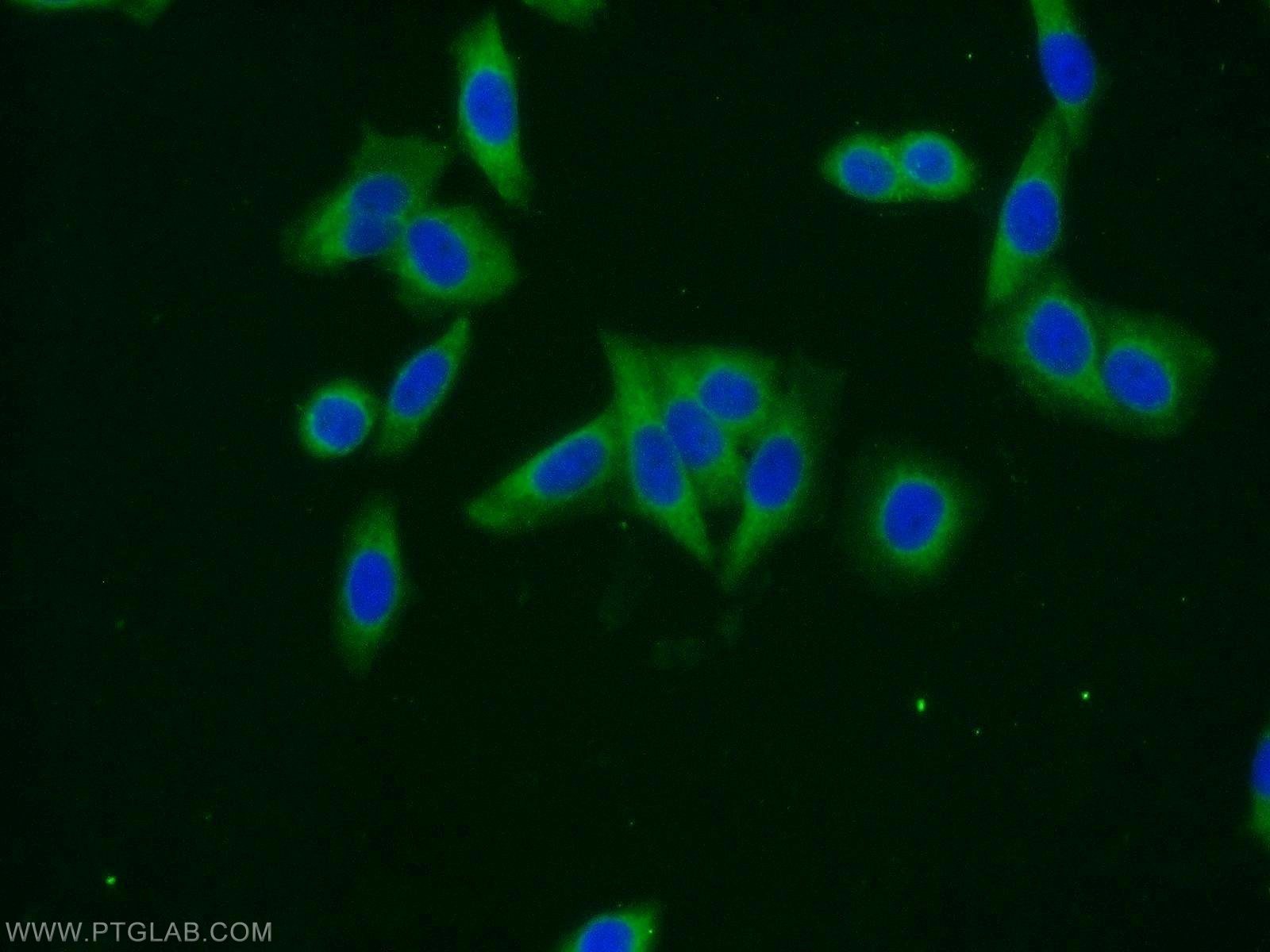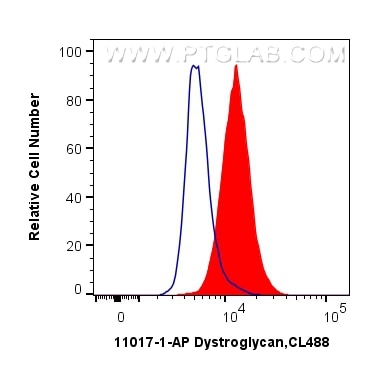- Phare
- Validé par KD/KO
Anticorps Polyclonal de lapin anti-Dystroglycan
Dystroglycan Polyclonal Antibody for WB, IHC, IF/ICC, FC (Intra), IP, ELISA
Hôte / Isotype
Lapin / IgG
Réactivité testée
Humain, rat, souris et plus (1)
Applications
WB, IHC, IF/ICC, FC (Intra), IP, CoIP, ELISA
Conjugaison
Non conjugué
N° de cat : 11017-1-AP
Synonymes
Galerie de données de validation
Applications testées
| Résultats positifs en WB | cellules HepG2, cellules HeLa, tissu cérébral de souris, tissu de muscle squelettique de souris |
| Résultats positifs en IP | tissu cérébral de souris, |
| Résultats positifs en IHC | tissu cardiaque de souris, tissu cérébral de souris, tissu de muscle squelettique de souris il est suggéré de démasquer l'antigène avec un tampon de TE buffer pH 9.0; (*) À défaut, 'le démasquage de l'antigène peut être 'effectué avec un tampon citrate pH 6,0. |
| Résultats positifs en IF/ICC | cellules HeLa |
| Résultats positifs en FC (Intra) | cellules HeLa, |
Dilution recommandée
| Application | Dilution |
|---|---|
| Western Blot (WB) | WB : 1:5000-1:50000 |
| Immunoprécipitation (IP) | IP : 0.5-4.0 ug for 1.0-3.0 mg of total protein lysate |
| Immunohistochimie (IHC) | IHC : 1:50-1:500 |
| Immunofluorescence (IF)/ICC | IF/ICC : 1:10-1:100 |
| Flow Cytometry (FC) (INTRA) | FC (INTRA) : 0.40 ug per 10^6 cells in a 100 µl suspension |
| It is recommended that this reagent should be titrated in each testing system to obtain optimal results. | |
| Sample-dependent, check data in validation data gallery | |
Applications publiées
| WB | See 7 publications below |
| IHC | See 4 publications below |
| IF | See 3 publications below |
| CoIP | See 1 publications below |
Informations sur le produit
11017-1-AP cible Dystroglycan dans les applications de WB, IHC, IF/ICC, FC (Intra), IP, CoIP, ELISA et montre une réactivité avec des échantillons Humain, rat, souris
| Réactivité | Humain, rat, souris |
| Réactivité citée | rat, Humain, porc, souris |
| Hôte / Isotype | Lapin / IgG |
| Clonalité | Polyclonal |
| Type | Anticorps |
| Immunogène | Dystroglycan Protéine recombinante Ag1456 |
| Nom complet | dystroglycan 1 (dystrophin-associated glycoprotein 1) |
| Masse moléculaire calculée | 97 kDa |
| Poids moléculaire observé | 40-43 kDa |
| Numéro d’acquisition GenBank | BC012740 |
| Symbole du gène | Dystroglycan |
| Identification du gène (NCBI) | 1605 |
| Conjugaison | Non conjugué |
| Forme | Liquide |
| Méthode de purification | Purification par affinité contre l'antigène |
| Tampon de stockage | PBS with 0.02% sodium azide and 50% glycerol |
| Conditions de stockage | Stocker à -20°C. Stable pendant un an après l'expédition. L'aliquotage n'est pas nécessaire pour le stockage à -20oC Les 20ul contiennent 0,1% de BSA. |
Informations générales
Dystroglycan, also known as DAG1 or DG, was originally isolated from skeletal muscle as an integral membrane component of the dystrophin-glycoprotein complex (DGC). In addition to skeletal muscle, dystroglycan is strongly expressed in heart and smooth muscle, as well as many non-muscle tissues including brain and peripheral nerve (PMID: 12556455). The dystroglycan is involved in a number of processes including laminin and basement membrane assembly, sarcolemmal stability, cell survival, peripheral nerve myelination, nodal structure, cell migration, and epithelial polarization. Dystroglycan consists of two subunits (alpha and beta), which are translated from a single mRNA as a propeptide that is proteolytically cleaved into two noncovalently associated proteins (PMID: 16410545). Alpha-dystroglycan is a 156-kDa extracellular peripheral glycoprotein, while beta-dystroglycan is a 43-kDa transmembrane protein (PMID: 9858474). The 43-kDa beta-dystroglycan can be cleaved into a ~30-kDa form (PMID: 14678802; 18458097; 17255331).
Protocole
| Product Specific Protocols | |
|---|---|
| WB protocol for Dystroglycan antibody 11017-1-AP | Download protocol |
| IHC protocol for Dystroglycan antibody 11017-1-AP | Download protocol |
| IF protocol for Dystroglycan antibody 11017-1-AP | Download protocol |
| IP protocol for Dystroglycan antibody 11017-1-AP | Download protocol |
| FC protocol for Dystroglycan antibody 11017-1-AP | Download protocol |
| Standard Protocols | |
|---|---|
| Click here to view our Standard Protocols |
Publications
| Species | Application | Title |
|---|---|---|
Nat Commun IL-20 antagonist suppresses PD-L1 expression and prolongs survival in pancreatic cancer models. | ||
Transl Res AAV-based gene therapy prevents and halts the progression of dilated cardiomyopathy in a mouse model of phosphoglucomutase I deficiency (PGM1-CDG) | ||
Mol Oncol Circular RNA circ-TNRC6B inhibits the proliferation and invasion of esophageal squamous cell carcinoma cells by regulating the miR-452-5p/DAG1 axis | ||
Respir Res YAP/TAZ-mediated nuclear membrane rupture in promoting senescence of skeletal muscle associated with COPD | ||
Cell Commun Signal Wnt-driven LARGE2 mediates laminin-adhesive O-glycosylation in human colonic epithelial cells and colorectal cancer. | ||
Front Cardiovasc Med Determination of Agrin and Related Proteins Levels as a Function of Age in Human Hearts. |
Avis
The reviews below have been submitted by verified Proteintech customers who received an incentive for providing their feedback.
FH Perrin (Verified Customer) (11-22-2022) | Works very well, with little background
|
FH Ryan (Verified Customer) (01-10-2018) |
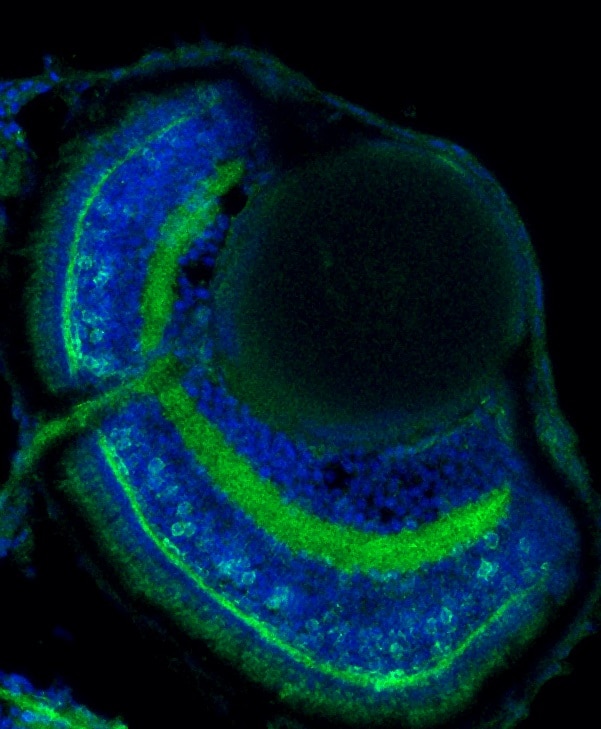 |
